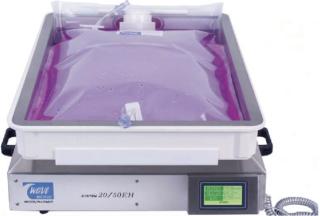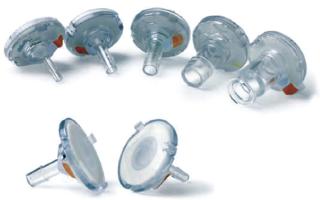Voices of Biotech
Podcast: MilliporeSigma says education vital to creating unbreakable chain for sustainability
MilliporeSigma discusses the importance of people, education, and the benefits of embracing discomfort to bolster sustainability efforts.

Buffer preparation and distribution are among the most common unit operations in biotherapeutic production. Despite the sheer volume of buffer consumed in bioprocessing and the importance of buffers in nearly every process step (e.g., cell growth, chromatographic separation, final formulation), buffers generally receive less attention from process development and process improvement teams than more challenging areas such as media preparation or active pharmaceutical ingredient (API) production. As one researcher stated, “buffer preparation is not valued as a strategic core competence and is often relegated to junior staff” (1).
Nevertheless, buffer quality can have an impact on process efficiencies and final product quality. Proper buffer preparation, filtration, and distribution are key to the protection of chromatography columns and ultrafiltration operations from microbiological and particulate contamination.
Buffer Preparation
Buffer storage was one of the first unit operations to transition to single-use systems. Recent analyses have confirmed that there is a clear economic advantage to this methodology over traditional hard-piped systems. Buffer mixing, however, continues to rely on more traditional technology (2). This is partially due to the scale of many buffer preparation processes and partially due to a reliance on existing infrastructure. However, as new facilities are commissioned and as new technologies are introduced that limit the volume of buffers required, single-use mixers are being chosen over traditional technologies (3). The shift to single use is driven by the needs to minimize capital investment, enable more rapid process setup, reduce down-time, and provide increased flexibility.
For buffer preparation steps, GE Healthcare recommends the WAVE™ Mixer. The WAVE Mixer provides efficient mixing in a sterile, sealed bag by an innovative method. Instead of using a pump or invasive impeller to induce circulation flow, it uses waves generated in the liquid by a precisely regulated rocking motion. The system has been optimized for extremely efficient mixing and dispersion. Wave motion moves large volumes of fluid and disperses solids. The WAVE Mixer eliminates the need for a mixing tank and conventional mixer. This also eliminates equipment cleaning, sterilization, and validation.
The system comprises two main components: a special rocking platform that induces a wave motion in the liquid without an impeller or other invasive mixer and the M*Bag™, which contains the ingredients to be mixed and dissolved. The unique M*Bag is made of a multilayer laminated clear plastic designed to provide high mechanical strength. A large screw cap port allows powders or other solids to be easily poured into the bag. Probes to measure pH and conductivity can be inserted. A large outlet port allows the M*Bag to be drained completely.

Standard systems are available for 20 liter and 50 liter bags. These can be used to mix volumes from 1 to 35 liters of liquid. Larger systems up to 500 liters liquid volume are available. The WAVE Mixer principle has also been used for the mixing of materials in custom-shaped rigid containers.
Buffer Filtration
Biological and particle contaminants present in buffers can have a large impact on process efficiencies and final product quality. Therefore, normal flow filtration is one of the first steps (after dissolution) in any buffer preparation process. Buffer filtration is key to protection of chromatography columns and ultrafiltration operations and to production of an endotoxin-free final product. Buffer filtration also aligns with FDA guidelines on sterile drug products that advise to reduce and control bioburden across the process.
Buffer filters should be chosen based on the following characteristics:
validated retention of bacteria
broad chemical compatibility
high permeability
physical robustness.
For more detailed information on selecting buffer filters, refer to reference (4).

For filtration of sterile and reduced-bioburden buffers, GE Healthcare recommends ULTA™ Pure SG (for buffer sterilization) and ULTA Prime CG (for bioburden reduction). The ULTA family of filters use membranes with industry-leading permeability that consistently outperform competitive offerings. Both filter grades are constructed using polyethersulfone 0.2 micron membrane, which is physically robust and chemically resilient, so they perform reliably regardless of the buffer being prepared. Additionally, both filters employ a final membrane that is validated for bacterial retention using the ASTM F838-05 methodology. (LRV > 7 for ULTA Pure SG and LRV > 5 for ULTA Prime CG).
ULTA filters are available in a wide variety of cartridge and capsule formats with surface areas ranging from 450 cm2 to 1.5 m2 in a single device.
Buffer Distribution
Once buffers have been prepared and filtered, they must be brought to the final point of use and integrated into the unit operation. Traditionally, performing these connections aseptically has been difficult, thereby increasing process risk and/or requiring additional use of capital-intensive classified manufacturing space.
In recent years, several disposable aseptic connectors (DAC) have been developed that enable simple, safe connections of buffer bags and vessels. Disposable aseptic connectors offer the following advantages:
rapid, secure workflows while maintaining sterile integrity.
secure, simple, and economical connections for upstream and downstream applications
gamma and autoclave compatibility for integration into sterile circuits or existing processes
For single-use connections of buffer bags, GE Healthcare recommends the ReadyMate™ disposable aseptic connector. ReadyMate connectors have several unique advantages over other competing designs:
The genderless design and cross-size connectivity of the ReadyMate ensures flexibility and simplicity. All connectors fit together regardless of size because connection faces are identical.
ReadyMate connectors are available in four standard hose barb sizes and mini TC.
All sizes have a smooth, uninterrupted flow path design, with larger inner bore than competitive connectors, making them suitable for high flow.
The closure mechanism of ReadyMate uses the familiar, validated standard (ISO 2852) sanitary clamp or a disposable ReadyClamp™ mechanism to make a tamper-proof, lightweight connection. This closure mechanism enables ReadyMates to withstand high operating pressures when needed. Also, moving assemblies around a facility can be done with confidence.
ReadyMate connectors can be purchased directly through GE Healthcare. Alternatively, they can be specified on buffer storage systems from most major suppliers of single-use assemblies via our extensive OE distribution network.
To see a video of a ReadyMate connection, visit: www4.gelifesciences.com/aptrix/upp01077.nsf/Content/bioprocess~re adytoprocess~connectivity.
Conclusion
GE Healthcare and the GE Healthcare line of ReadyToProcess™ products provide efficient, reliable solutions for buffer preparation, filtration and distribution. For additional information about these and other GE Healthcare process solutions, contact your local office or visit http://www.gelifesciences.com/contact.

1.) Walker,. 2005.Buffer Blending for cGMP Bioprocessing in the 21st Century Poster reprint.
2.) Barnoon, B, and B. BaderLifecycle Cost Analysis for Single-Use SystemsBioPharm International (Supplement to November 2008).
3.) Matthews,. 2009.An Integrated Approach to Buffer Dilution and StoragePharmaceutical Manufacturing.
4.) Royce,Guidelines for Selecting Normal Flow Filters Pharmaceutical Technology (Supplement to November 2008).
You May Also Like